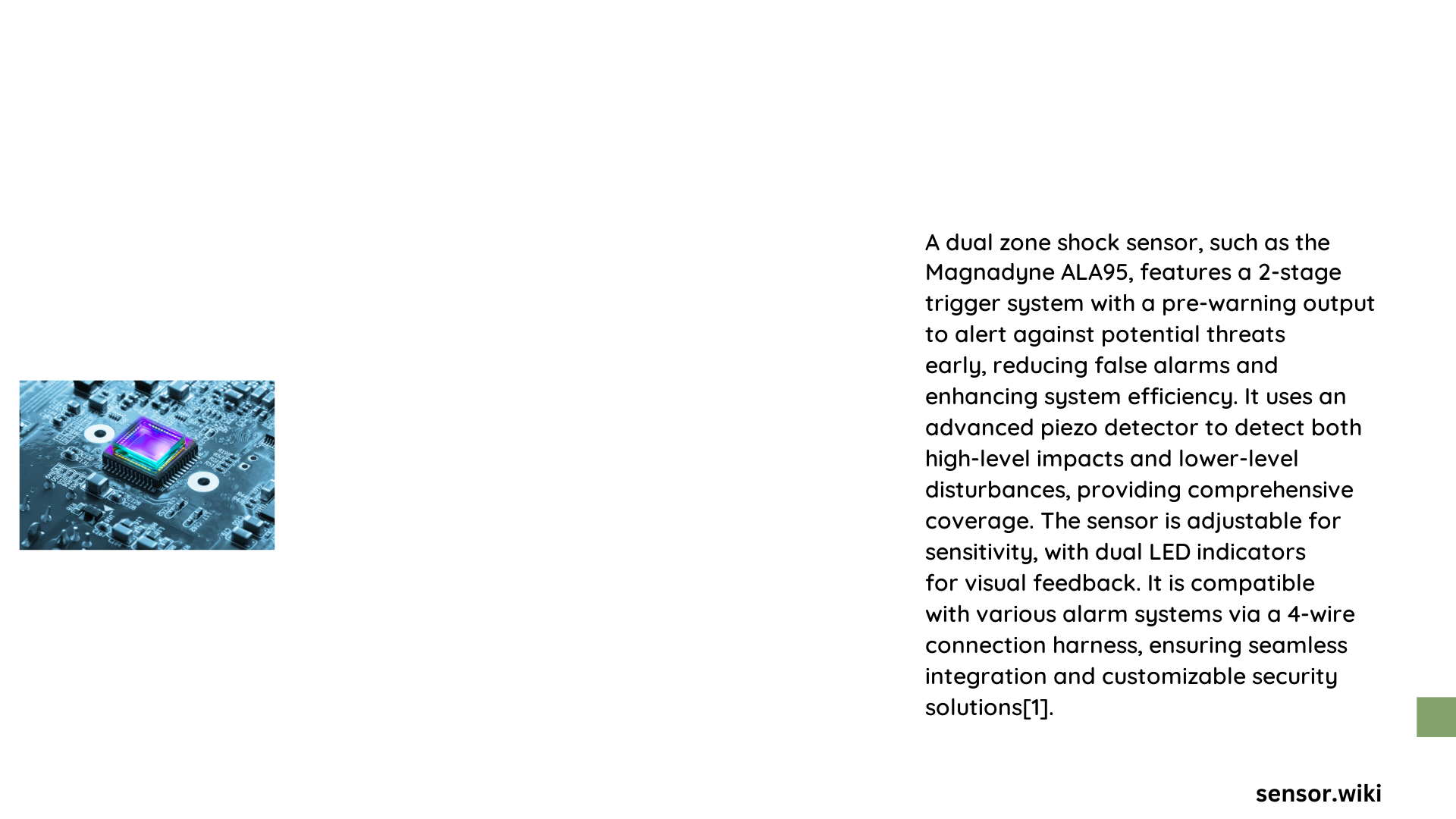Dual Zone Shock Sensor: Advanced Security Technology for Modern Vehicles
A dual zone shock sensor represents a sophisticated automotive security technology designed to detect and respond to varying levels of impact and vibration. By utilizing advanced piezoelectric or magnetic detection mechanisms, these sensors provide comprehensive protection against potential vehicle intrusions, offering two distinct sensitivity zones that can distinguish between minor disturbances and significant threats.
What Makes Dual Zone Shock Sensors Unique?
Dual zone shock sensors differentiate themselves through their ability to simultaneously monitor multiple impact levels with precision. Unlike traditional single-zone sensors, these advanced devices can:
- Detect high-intensity impacts
- Recognize low-level disturbances
- Provide nuanced security responses
- Minimize false alarm occurrences
How Do Dual Zone Shock Sensors Work?
Detection Mechanism
- Primary Zone: Monitors significant impacts
- Secondary Zone: Tracks minor vibrations
- Signal Processing: Advanced microprocessors analyze incoming signals
| Detection Characteristic | Primary Zone | Secondary Zone |
|---|---|---|
| Sensitivity Level | High | Low |
| Trigger Threshold | Strong Impact | Minor Vibration |
| Response Time | Immediate | Delayed |
What Are the Key Technical Specifications?
Core Technical Features
- Voltage Range: 9-16V DC
- Detection Technology: Piezoelectric/Magnetic
- Wiring Configuration: 4-wire harness
- Compatibility: Multiple alarm system interfaces
Where Should Dual Zone Shock Sensors Be Installed?
Recommended Installation Locations
- Vehicle door frames
- Trunk structures
- Hood mounting points
- Chassis reinforcement areas
How to Configure Sensitivity Settings?
Sensitivity Adjustment Techniques
- Use DIP switch configurations
- Calibrate based on environmental conditions
- Test and fine-tune detection levels
- Monitor LED indicator responses
What Challenges Might Users Encounter?
Common Installation and Configuration Issues
- False alarm triggers
- Improper mounting
- Incorrect sensitivity calibration
- Compatibility limitations
Troubleshooting Dual Zone Shock Sensor Problems
Diagnostic Steps
- Verify wiring connections
- Check sensor alignment
- Recalibrate sensitivity settings
- Inspect mounting surface integrity
Performance Metrics and User Feedback
User-Reported Experiences
- High detection accuracy
- Reliable security performance
- Easy installation process
- Minimal maintenance requirements
Best Practices for Optimal Performance
Maintenance Recommendations
- Regular sensitivity testing
- Annual sensor recalibration
- Professional installation
- Environmental adaptation
Technical Considerations for Advanced Users
Signal Processing Insights
- Microprocessor-driven analysis
- Multi-stage filtering algorithms
- Adaptive response mechanisms
Conclusion
Dual zone shock sensors represent a sophisticated approach to vehicle security, offering nuanced detection capabilities that traditional sensors cannot match. By understanding their technical specifications and implementing proper installation techniques, users can significantly enhance their vehicle’s protection.

